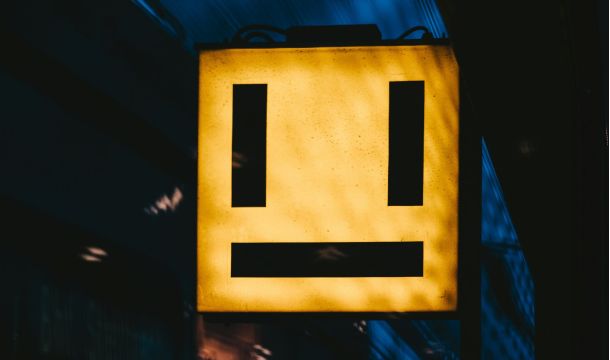What Liability do Businesses Face Related to the Pandemic?
Whether American employers are reducing their workforces in response to the pandemic, or re-opening and/or expanding their workforce, numerous liability issues exist. This article discusses the types of liability issues most likely to result in litigation against employers.
Getting the Virus at Work
Perhaps the first type of liability to be addressed is that of claims by employees that they are exposed to the Coronavirus on the job, due to the employer's negligence or otherwise. Public interest groups have sued Smithfield Foods, for example, for allegedly creating a public nuisance by failing to protect its workers at a pork processing plant in Missouri. A federal judge dismissed the lawsuit, ruling that the Occupational Safety and Health Administration (OSHA) had primary jurisdiction. On April 28, 2020, President Trump signed an executive order invoking the Defense Production Act to insure Americans have reliable supply of meat products, but it did not provide any immunity from tort lawsuits. In Georgia, the governor on April 20, 2020 signed an executive order allowing the re-opening of businesses but it did not grant immunity to any business although it designated certain individuals involved in healthcare as auxiliary emergency management workers, which could give them limited immunity treating patients. In general, the President has deferred to governors and mayors the determination of closures and reopening schedules in their areas, although the federal government through its agencies have announced certain general standards. The White House recently issued "Guidelines for Opening Up America Again" to help employers develop and implement appropriate policies, in accordance with federal, state and local regulations and guidance, and informed by industry best practices, regarding social distancing, temperature checks, and the like. These efforts through Presidential and gubernatorial executive orders raise the question as to the extent to which such measures can protect an employer in a situation where an employee is required to come to work and contracts the Coronavirus when an employee contends that the virus was acquired at work due to the employer's negligence and/or failure to meet various local, state, and federal standards of safety. Such standards may require social distancing, the provision of sanitizer and safety gear and other measures. And yet, many of the businesses opening make it impossible for persons to stay six feet away from each other, and it is rare to find a workplace fully meeting at all times each and every local, state and federal recommendation and/or requirement. Indeed, it is hard to differentiate many of the public announcements as requirements or merely recommendations or potential precautions. The Administration is seeking further protection for employers against Coronavirus litigation claims, but as of this writing, no resolution in Congress has been reached.
Plaintiff's attorneys will likely contend that an employer has failed to take prudent steps to maintain or open their businesses and not endanger their employees. Many believe that the most difficult area for plaintiff's groups is to show that the resulting Coronavirus was acquired at work, particularly given the incubation period of 14 days. Further, the workers' compensation exclusivity provision limits most claims to workers' compensation, although some states have exceptions for willful or extreme safety violations. Further, many worker's compensation laws do not cover people contracting easily transferable viruses and other diseases, and such exclusions may allow legal claims in court. Even if a lawsuit lacks merit, the burden of defense may discourage or weaken many employers. The lawsuit against Smithfield Foods is particularly significant in that it claims a public nuisance was created where the employer failed to provide masks and stagger breaks for employees at a cramped processing plant, putting workers at risk.
Thus, one of the first things for employers to consider is physical workplace modifications, in an attempt to increase spacing between work stations. Other steps would include posting signs reminding everyone of social distancing, limiting in-person interactions and physical contact, including alternate or staggered work arrangements, establishing protocols for employees and visitors, possibly conducting temperature screens and other symptom checks, providing personal protective equipment and/or masks, cleaning and disinfecting various areas, and following standard operating procedures for employees who experience symptoms.
Special Problems Relating to Work Time
Among the teleworking issues are the need for accurate timekeeping. The need for accurate timekeeping is intensified in regards to telework because employers may not have established procedures for reporting time worked, including time answering phone calls and emails and during lunch breaks. Employees may buy certain personal devices for work and issues are raised where such expenses push their pay below minimum wage, and some states have strict laws regarding employee expenses.
Even after employees return to the work site, employers may require additional measures before clocking in such as waiting for temperature checks or the donning or cleaning of personal protective equipment. Whether such time spent is compensable work time is complicated, and raises questions under state law as well as federal law.
The existence of paid sick time and unpaid leave time under the new legislation creates issues when employees are sick or cannot work because they have to care for a child whose school or daycare has closed. Such claims can include not only the paid time off, but also the issue of retaliation against workers who request such leave. In the first enforcement action initiated by the Labor Department, the employer settled a case in which the employee offered only a note from a doctor in Mexico to support his request for COVID-19-related leave, and the physician's assessment was made over the phone.
Lay-Offs Create Litigation Issues
Mass lay-offs have accompanied the spread of the Coronavirus and employers often forget that the Worker Adjustment and Retraining Notification Act (WARN) requires that employers with 100 or more employees give at least 60 days' notice before closing or laying off a certain number of workers. A lawsuit against Hooters is pending involving this issue after nearly 700 Florida workers were laid off without prior notice. While there may be potential defenses pertaining to "unforeseeable" circumstances, there are a lot of detailed requirements that must be met to present such a defense. In general, WARN applies to companies when 50 or more workers are laid off at a single site, as long as that represents at least a third of that location's workforce, or 500 workers. Strategy issues arise concerning whether employers may want to be safe and send the notices even if they hope to recall the workers within six months.
Further, in the event of lay-offs or significant reductions in hours, there are requirements under the Consolidated Omnibus Budget Reconciliation Act (COBRA) that must be met. COBRA requires employers with group health plans covering 20 or more employees to notify each plan participant and beneficiary of their right to choose continued healthcare coverage for limited periods of time under certain circumstances. Cases brought under COBRA generally allege that an employer failed to give notice or that an employer's notice lacked required information or was not written in an easy-to-understand way. The DOL has relaxed enforcement of COBRA notices as a result of the Coronavirus in a guidance filed April 30, 2020, in which employers that let employees go after March 1 do not need to send COBRA election notices until the pandemic ends. The guidance does not change what information has to be included in a notice, however. Further, DOL has delayed the deadline for employees to sign up for and pay for up to 18 months of continued healthcare coverage under COBRA. DOL is now telling employers and employees that they need not start the 60 days to elect COBRA coverage period, until 60 days after the national emergency ends. Under the guidance, participants will have 90 days after the national emergency ends to make up payments they missed during the pandemic, but those missed premiums would all be due at once.
Further, the selection of which workers are laid off or recalled can also create discrimination issues, either that those laid off were disparately treated or the results had a "disparate" impact on workers of a certain race, sex or other protected class, even in the absence of intentional discrimination. On May 7, 2020, the EEOC released guidance that an employer cannot bar an employee from returning to work solely because of an underlying medical condition, such as chronic lung disease or serious heart conditions that could create a higher risk of a person developing a severe illness from COVID-19. Two guidances were actually issued during the same week, the second guidance clarifying that the ADA does not permit employers to ban employees with an underlying condition from coming to work due to health concerns "unless the employee's disability poses a direct threat to his health that cannot be eliminated or reduced by reasonable accommodation." The employer must take into account an individualized assessment of the worker's condition "based on a reasonable medical judgment about this employee's disability - not the disability in general - using the most current medical knowledge and/or the best available objective evidence." The EEOC has issued temporary guidance, allowing employers, among other things, to take employees' temperatures, conduct inquiries into whether the employees have come into contact with anyone who has been diagnosed with COVID-19, conduct pre-workplace entry COVID-19 testing, and require employees to stay home if they have COVID-19 symptoms. The CDC recommends that employers inform employees of their possible exposure to COVID-19 in the event of an employee's contraction of the virus, while simultaneously warning employers to maintain confidentiality as required by the ADA, including by withholding the affected employee's identity.
Litigation Over Workers' Reluctance to Return to Work
Still another issue relates to workers' reluctance to return to work, either because they fear acquiring the Coronavirus and/or have other impairments that make them more susceptible to the Coronavirus. Issues may arise when employers are alleged to violate the Americans' With Disabilities Act (ADA) by refusing to let disabled workers telework and/or terminating workers who refuse to come back to work because of alleged fear. The situation may be intensified by the fact that a majority of workers may be receiving unemployment compensation twice their normal income, and thus not returning to work may not only increase their safety from the Coronavirus, but also increase their income. It does appear that an employee who refuses to come back to work can no longer collect unemployment compensation. In some states, attempts to collect unemployment benefits after refusing to return to work without a good work-related cause can be considered fraud. In some situations, however, employers agree to an arrangement with their employees allowing a gradual, partial return to work without losing the eligibility for unemployment benefits. Some employers might wish to consider "work sharing" arrangements that let employees get jobless benefits while they are working part-time, which is a federally authorized program allowing workers in at least 26 participating states to receive partial unemployment insurance to cover hours they are no longer working instead of being laid-off.
Related Content
Get Email Updates
Recent Content

The Constantly Changing Work Authorization Rules

New Administration Faces Temporary Injunctions against DEI Termination and Firing of NLRB Member

Biden Administration Issues Antitrust Guidelines for Business Activities Affecting Workers

Trump Executive Order Cancels a $17.75 Minimum Wage for Federal Contractors

Employers Must Keep up with Work Authorization Expiration Dates and TPS Status
